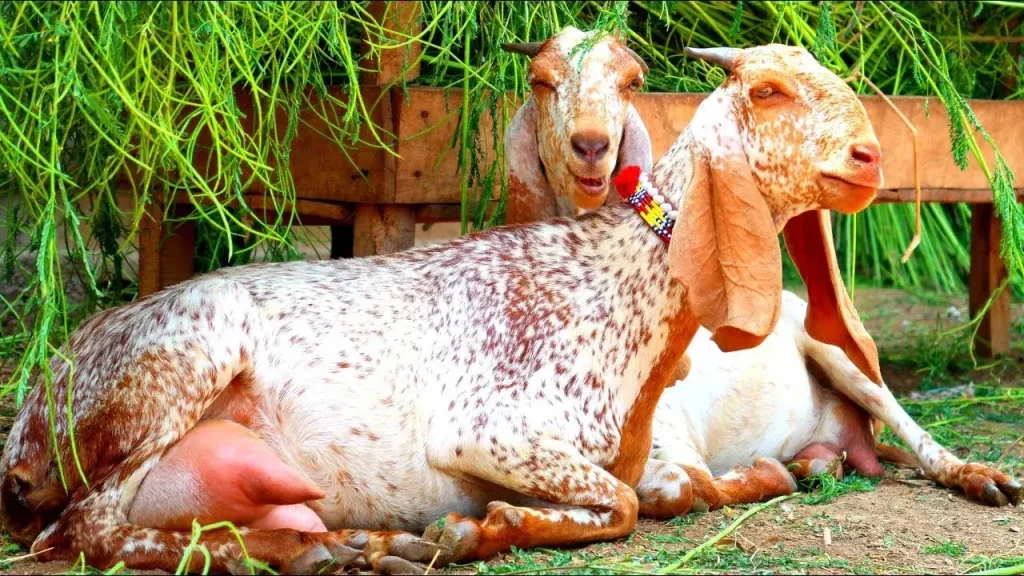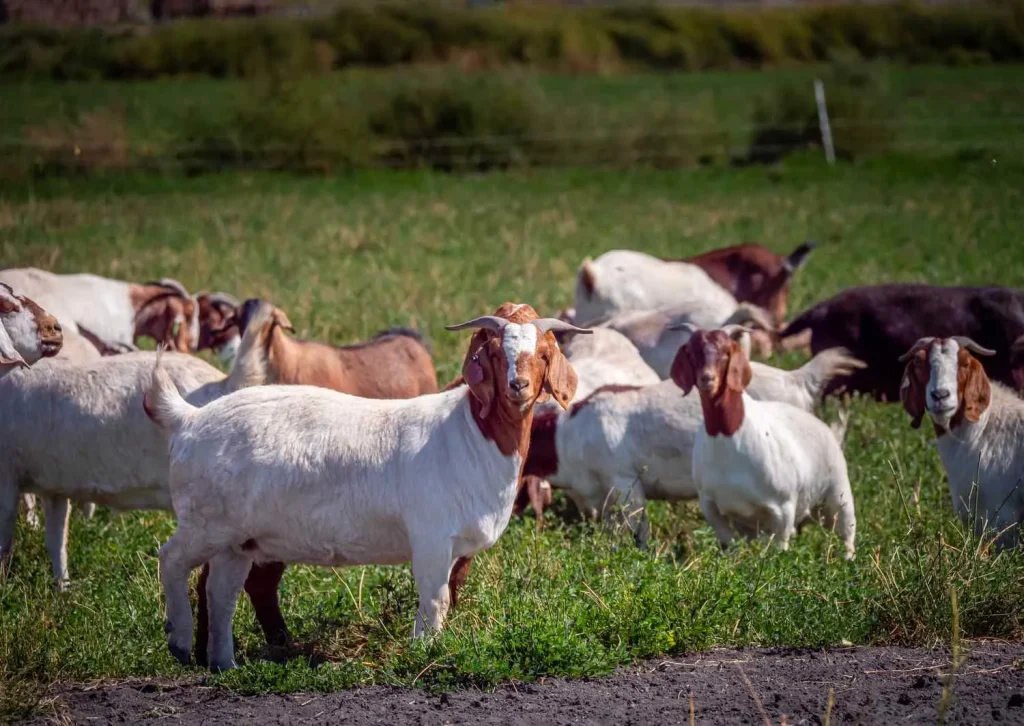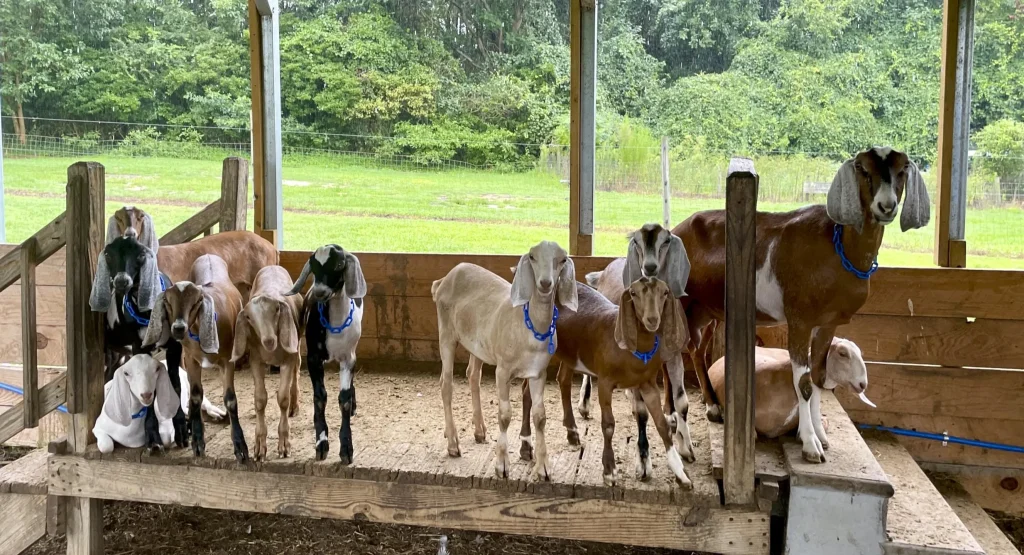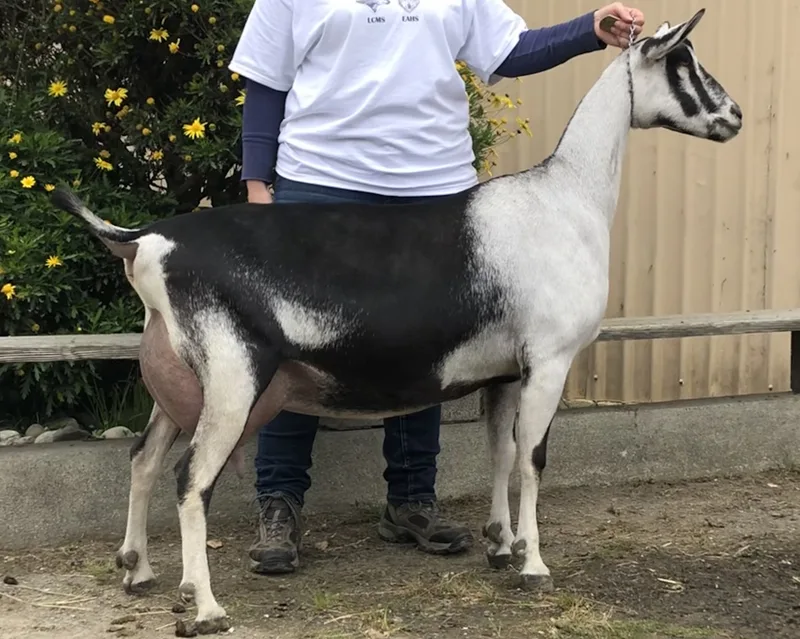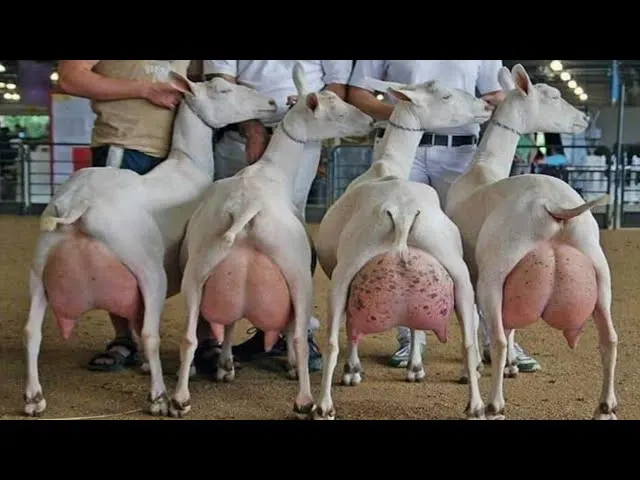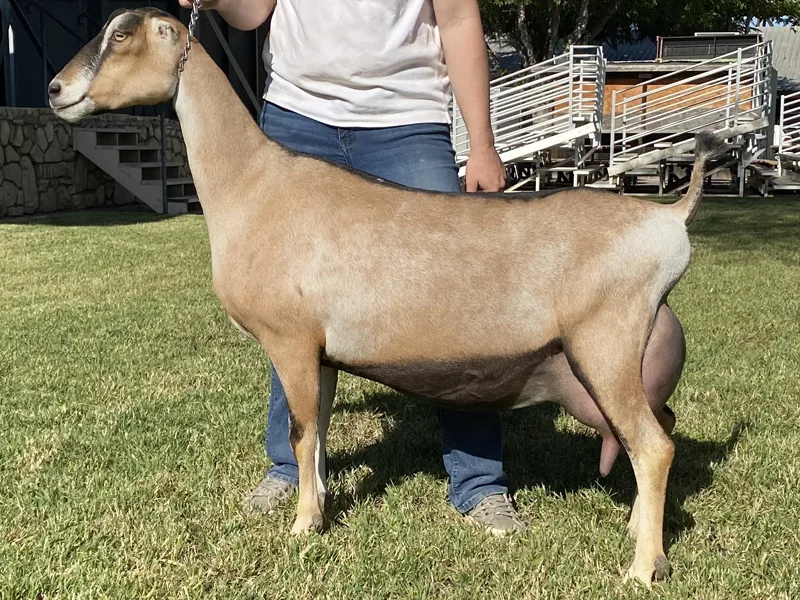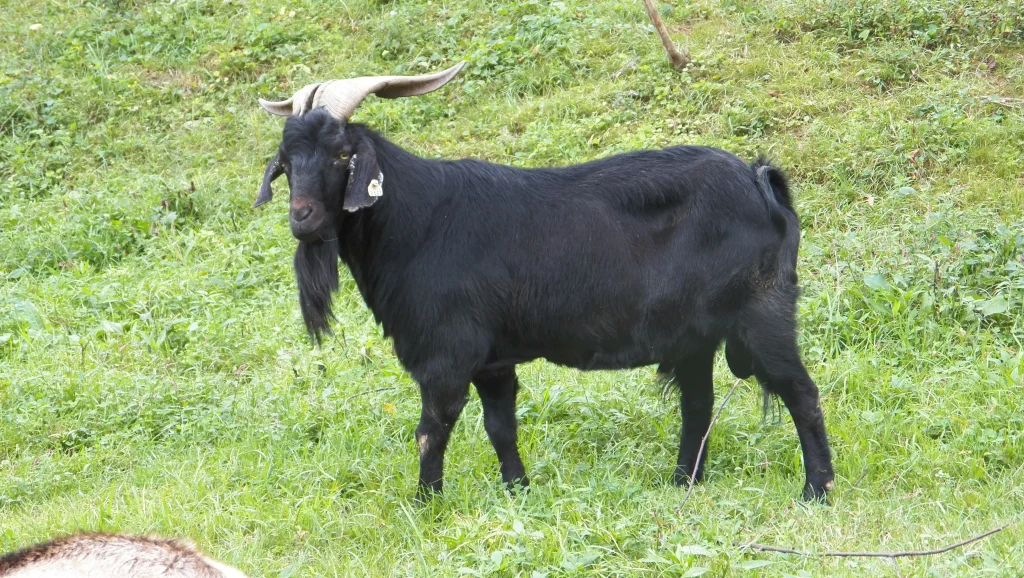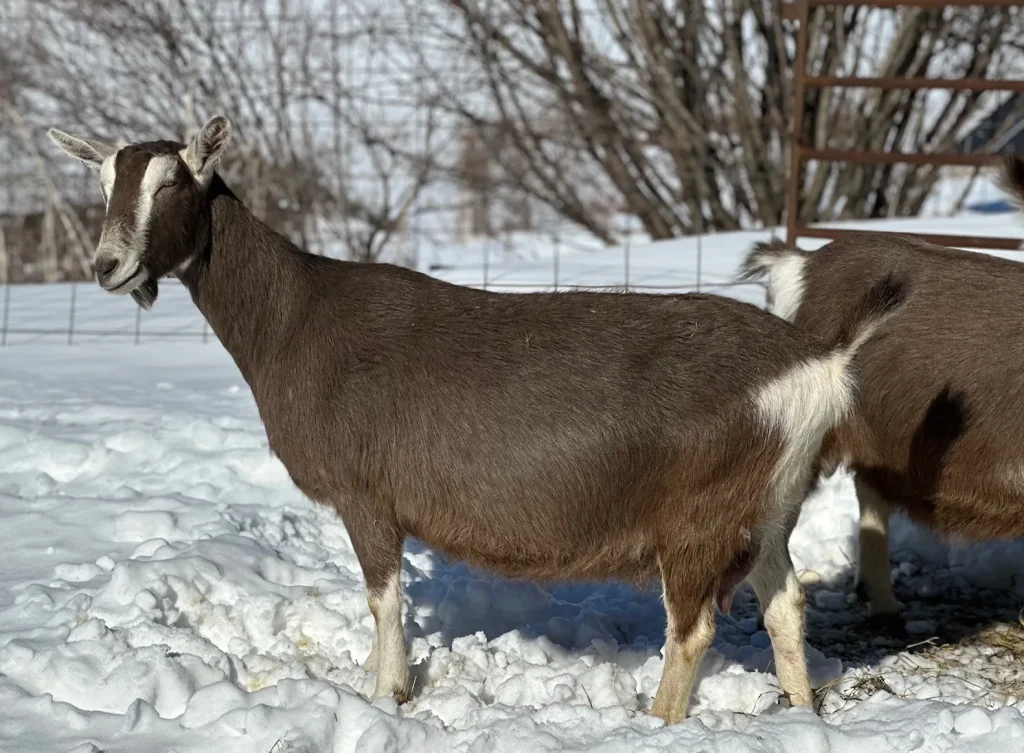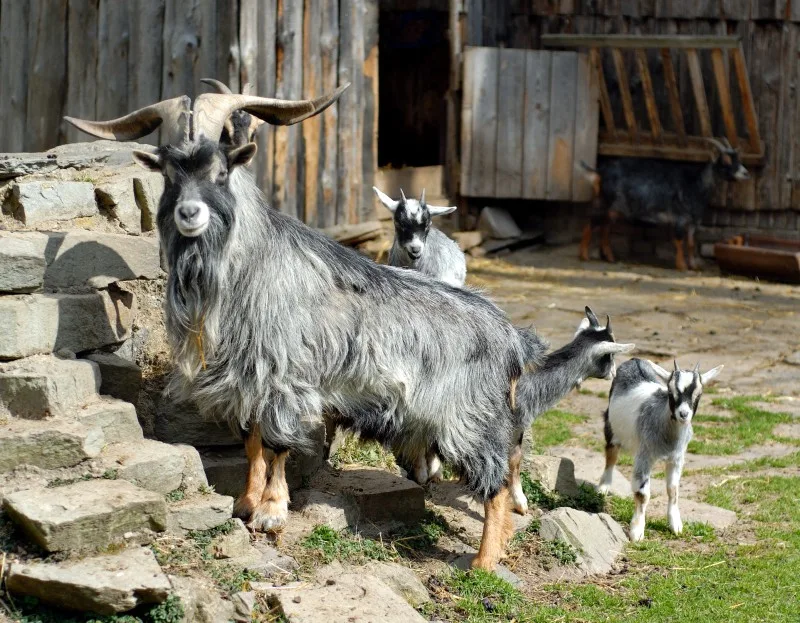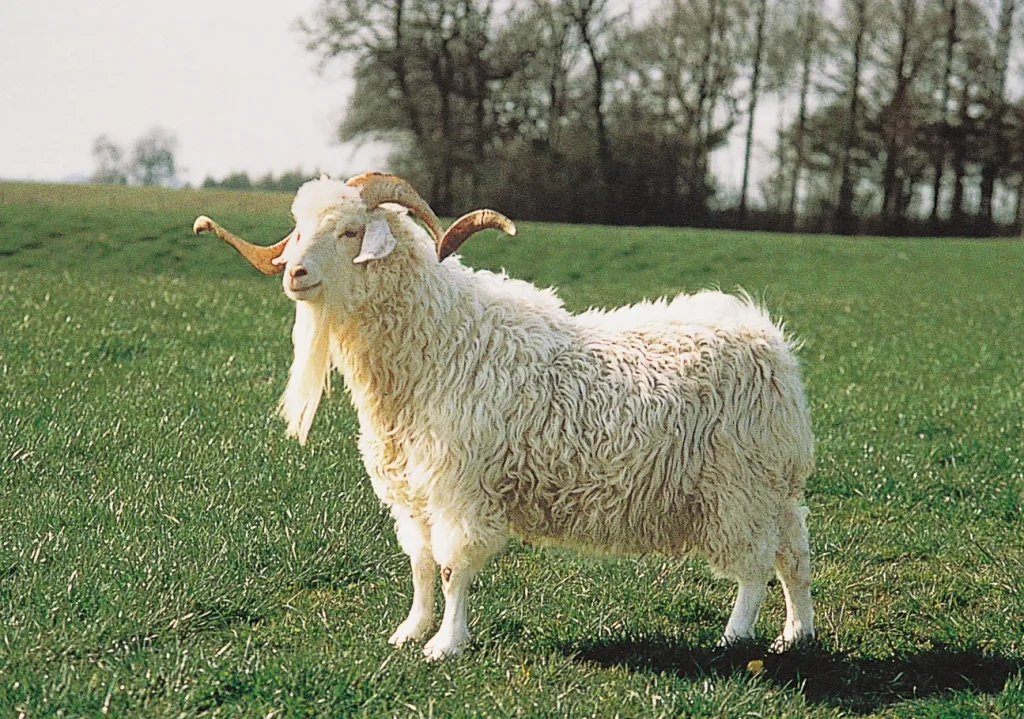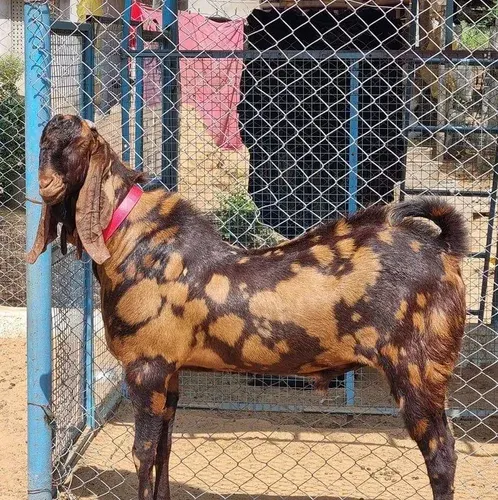🐐 Makhi Cheeni Goat – Pakistan’s Graceful and Rewarding Dairy Breed
🌿 Introduction
The Makhi Cheeni Goat is one of the most admired and distinctive goat breeds found in Pakistan. Recognized for its beautiful coat patterns, gentle nature, and reliable milk production, this breed is popular among farmers, families, and livestock keepers across Sindh and Punjab. Whether you’re managing a small farm, exploring livestock as a livelihood, or simply passionate about animals, the Makhi Cheeni goat offers both elegance and practical value.
📍 Origin and Distribution
Makhi Cheeni goats originally come from the Sindh province of Pakistan and are especially common in districts like Nawabshah, Sanghar, and Khairpur. They are often seen as a refined form of the Kamori breed, offering many similar traits but at a more accessible size and price point.
🎨 Physical Appearance
This breed is known for its unique and eye-catching appearance:
- 🖤 A coat that blends deep brown (makhi) with lighter, speckled patterns (cheeni)
- 👂 Long, pendulous ears similar to Kamori goats
- 🦒 Medium-to-tall stature with a slim, graceful frame
- 🌀 Usually horned, with delicately curved horns
Their distinct coloring and posture often make them stand out in herds and livestock shows.
📏 Size and Weight
Makhi Cheeni goats are moderately sized, making them suitable for a variety of farming environments:
- 🐐 Adult bucks: 60–70 kg (132–154 lbs)
- 🐐 Adult does: 45–55 kg (99–121 lbs)
Their manageable size is especially helpful for new or small-scale livestock keepers.
🥛 Milk Production
This breed is a dependable source of milk, which supports both household nutrition and small-scale income:
- 🍼 Average milk output: 1.5 to 2.5 liters per day
- 🥣 High in fat content, ideal for traditional dairy products
- 🕐 Lactation period: Approximately 6 to 8 months
🍀 Feeding and Nutrition
Makhi Cheeni goats flourish on a balanced, locally available diet:
- 🌾 Fresh green fodder such as berseem, lucerne, and maize
- 🌿 Dry roughage like wheat or rice straw
- 🍚 Grain-based concentrates for energy and growth, especially during pregnancy or lactation
- 🧂 Access to clean water and mineral supplements like salt licks
🏞️ Living Conditions
These goats are adaptable but thrive in a well-managed environment:
- 🌤️ Shelters with shade and proper airflow during hot seasons
- 🧼 Dry, hygienic flooring to prevent infections
- 👩🌾 Best suited for semi-intensive or fully managed farm systems
💉 Health and Lifespan
Makhi Cheeni goats are generally hardy and live long lives when well cared for:
- 💉 Timely vaccinations (PPR, foot-and-mouth, etc.) are essential
- 🧴 Regular deworming improves growth and immunity
- 🦶 Hoof care, including trimming and antiseptic foot baths, helps prevent lameness
With good management, they can live up to 10–12 years.
👪 Temperament and Behavior
This breed is known for being easy to manage and friendly:
- 🤝 Calm and sociable with people and other animals
- 🐾 Non-aggressive, which makes them ideal for families and community farms
- 🏡 Easy to train and handle, even by beginners
🕌 Cultural and Economic Significance
Makhi Cheeni goats are valued in many communities for both spiritual and economic reasons:
- 🎁 Widely preferred during Eid-ul-Adha for their elegant appearance
- 💰 Sought-after in markets, especially for well-raised male goats
- 🏆 Often featured in livestock beauty shows and exhibitions
🧬 Breeding and Reproduction
These goats breed reliably and are a good option for long-term herd improvement:
- 🔞 Reach reproductive age by 9–12 months
- 🤰 Gestation lasts about 145–150 days
- 👶 Commonly produces single or twin kids
Their stable genetics make them useful for crossbreeding with other local varieties like Kamori or Pateri goats.
📚 Interesting Facts About Makhi Cheeni Goats
- 🎨 Their name reflects their coat: “Makhi” (dark brown/black) and “Cheeni” (white/sugar)
- 🎯 Sometimes referred to as the “budget-friendly Kamori”
- 📸 Often featured on social media during Eid due to their charm
❓ Frequently Asked Questions
Q1: Is Makhi Cheeni a pure breed?
A: Makhi Cheeni goats are generally considered a stabilized crossbreed, primarily derived from Kamori and other local goats. They now have widely recognized characteristics.
Q2: How much does a Makhi Cheeni goat cost?
A: Prices vary depending on size, health, and season. A well-raised buck can cost between PKR 80,000 to 200,000, especially near Eid.
Q3: Can Makhi Cheeni goats thrive in colder areas like Northern Punjab or KPK?
A: Yes, with proper shelter and feeding, they can adapt to colder climates. However, they naturally thrive in semi-arid environments like those in Sindh.
Q4: What’s the difference between Makhi Cheeni and Kamori goats?
A: Kamori goats are generally larger and considered a premium breed. Makhi Cheeni goats offer a similar look and performance at a more accessible price and size.
Q5: Are Makhi Cheeni goats suitable for home-based or small-scale farms?
A: Absolutely. Their temperament, medium size, and milk yield make them a great choice for families, small farms, and community-led livestock projects.
✅ Conclusion
The Makhi Cheeni Goat stands out as a well-rounded, inclusive, and rewarding breed that suits a wide range of livestock needs. Whether you’re supporting your family’s nutrition, starting a farm, or preparing for Eid festivities, this goat offers beauty, productivity, and cultural relevance. With the right care, it can thrive in diverse environments and continue to benefit communities for generations to come.
